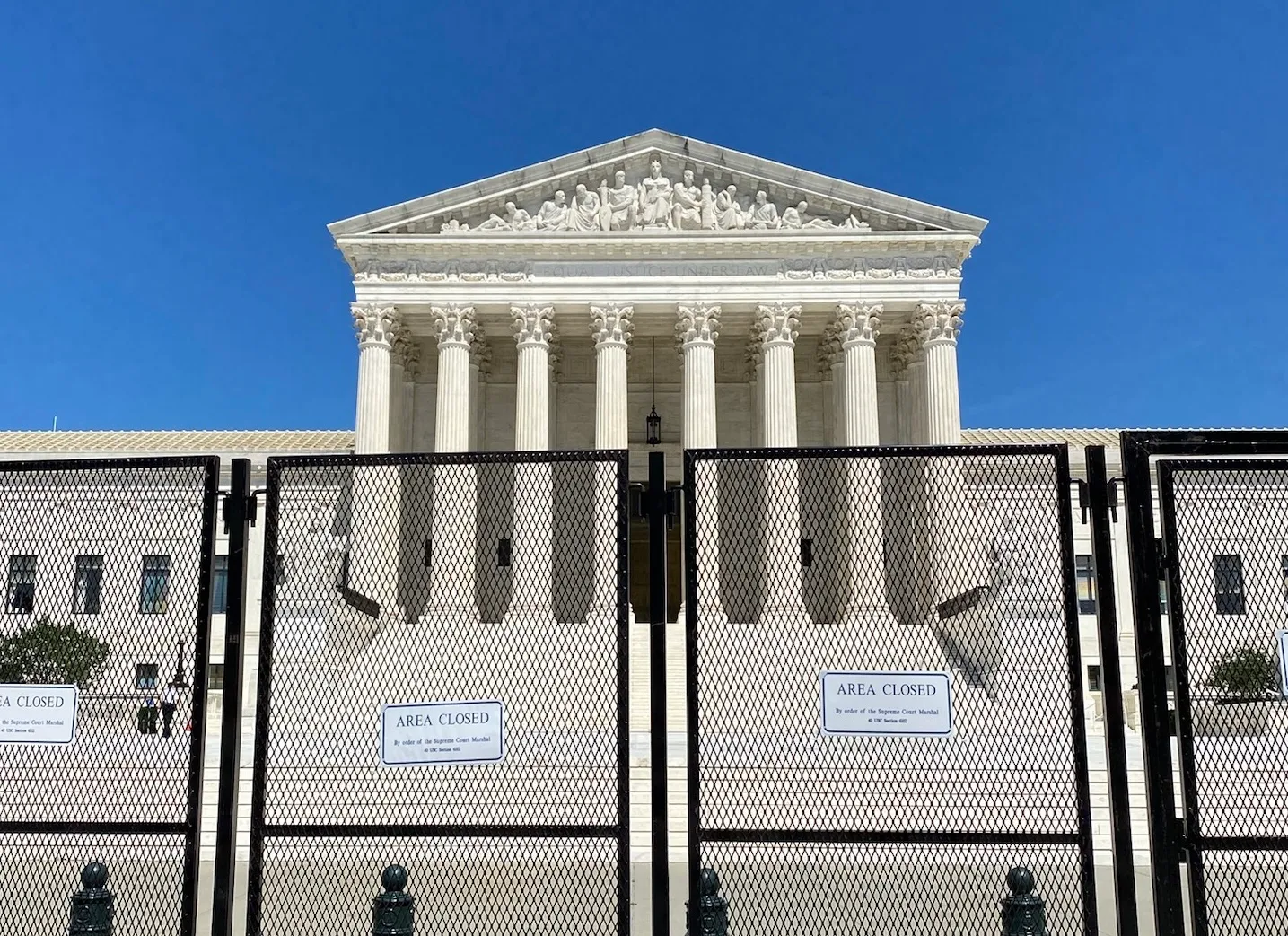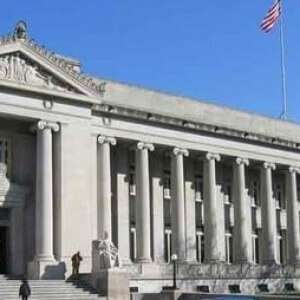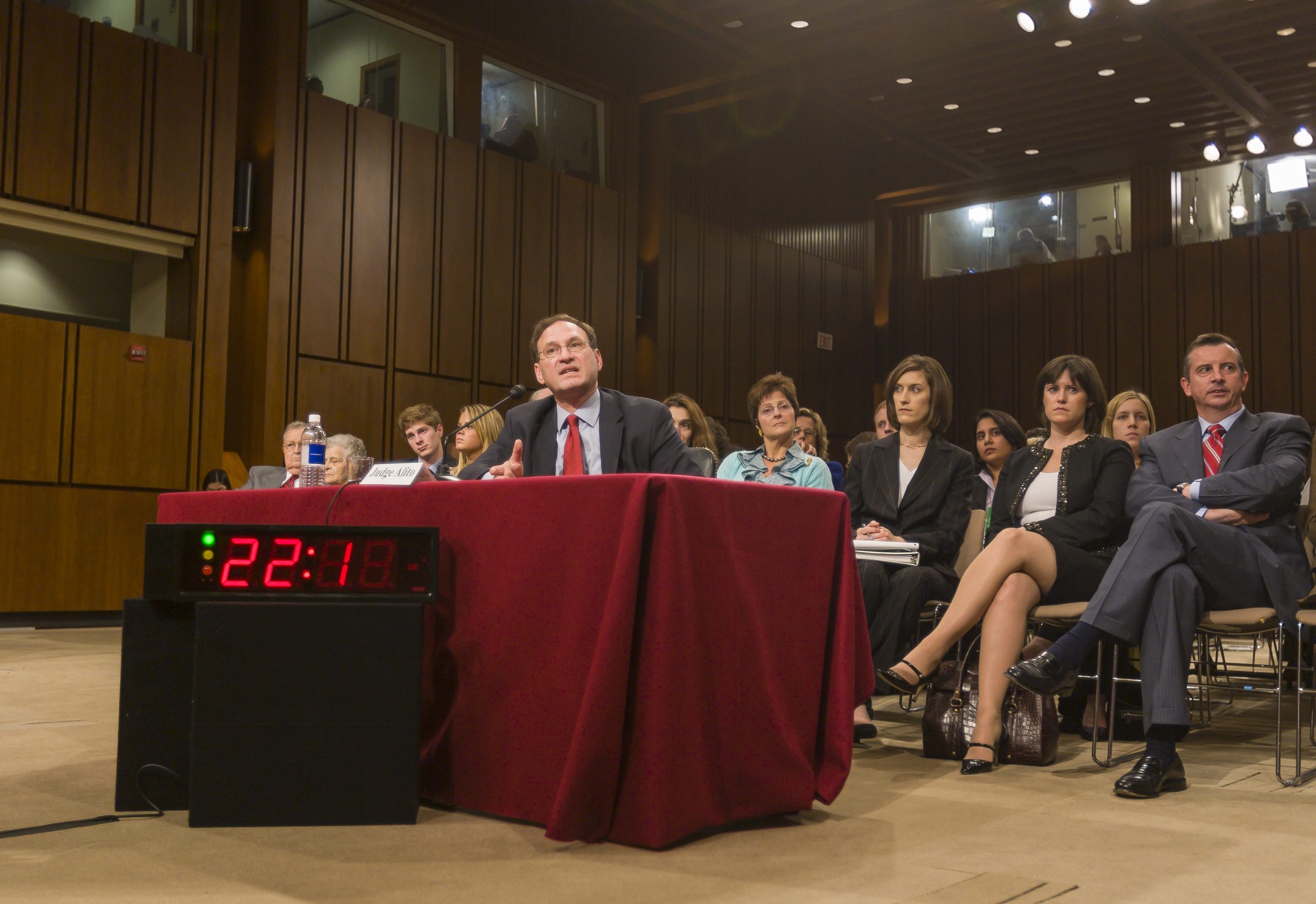Court strikes down Maine’s ban on using public funds at religious schools
OPINION ANALYSIS
on Jun 21, 2022
at 12:13 pm
The Supreme Court remains surrounded by a security barrier as the court nears the end of its term. (Katie Barlow)
This article was updated on June 21 at 1:38 p.m.
The Supreme Court on Tuesday ruled that Maine violated the Constitution when it refused to make public funding available for students to attend schools that provide religious instruction. The opinion by Chief Justice John Roberts was a broad ruling, making clear that when state and local governments choose to subsidize private schools, they must allow families to use taxpayer funds to pay for religious schools.
The decision was the latest in a series of cases in recent years in which the court has sided with parents and religious institutions challenging state policies that barred them from receiving education-related funds that were available for secular, but not religious, recipients.
The court’s three liberal justices dissented from Tuesday’s decision, with Justice Sonia Sotomayor cautioning that her colleagues had “upended constitutional doctrine” and expressing “growing concern for where this Court will lead us next.”
The dispute before the court in Carson v. Makin began as a challenge to the system that Maine uses to provide a free public education to school-aged children. In some of the state’s rural and sparsely populated areas, school districts opt not to run their own secondary schools. Instead, they choose one of two options: sending students to other public or private schools that the district designates, or paying tuition at the public or private school that each student selects. But in the latter case, state law allows government funds to be used only at schools that are nonsectarian – that is, schools that do not provide religious instruction.
Two Maine families went to court, arguing that the exclusion of schools that provide religious instruction violates the First Amendment’s free exercise clause. On Tuesday, the justices agreed. Roberts suggested that the court’s decision was an “unremarkable” application of prior decisions in two other recent cases (both of which Roberts wrote): Trinity Lutheran Church v. Comer, in which the justices ruled that Missouri could not exclude a church from a program to provide grants to non-profits to install playgrounds made from recycled tires, and Espinoza v. Montana Department of Revenue, holding that if states opt to subsidize private education, they cannot exclude private schools from receiving those funds simply because they are religious.
In this case, Roberts explained, Maine pays tuition for some students to attend private schools, as “long as the schools are not religious.” “That,” Roberts stressed, “is discrimination against religion.” It does not matter, Roberts continued, that the Maine program was intended to provide students with the equivalent of a free public education, which is secular. The focus of the program, Roberts reasoned, is providing a benefit – tuition to attend a public or private school – rather than providing the equivalent of the education that students would receive in public schools. Indeed, Roberts observed, private schools that are eligible for the tuition benefit are not required to use the same curriculum as public schools, or even to use certified teachers. He suggested that the state’s argument was circular: “Saying that Maine offers a benefit limited to private secular education is just another way of saying that Maine does not extend tuition assistance payments to parents who choose to educate their children at religious schools.”
Roberts similarly rejected the state’s argument that the tuition-assistance program does not violate the Constitution because it only bars benefits from going to schools that provide religious instruction. Although Trinity Lutheran and Espinoza focused on organizations’ religious status (rather than on whether the organizations would be using government funds for religious purposes), those rulings did not hold that states could make funding for private schools hinge on whether the schools provide religious instruction, Roberts explained. To the contrary, Roberts indicated, there is no real distinction between a school’s religious status and its use of funds for religious purposes.
Roberts also dismissed any suggestion that Tuesday’s ruling would require the state to fund religious education. Maine has other options to eliminate its need to fund private schools, Roberts noted: It could, for example, create more public schools or improve transportation to public schools. But having chosen to provide public funding for private schools, Roberts concluded, “it cannot disqualify some private schools solely because they are religious.”
Justice Stephen Breyer filed an 18-page dissent that Justice Elena Kagan joined and Sotomayor joined in part. Breyer emphasized that the First Amendment’s free exercise and establishment clauses were intended to strike a balance on the interaction between government and religion, with the ultimate goal of “avoiding religious strife” in a country that now has over 100 different religions. Maine’s program is intended to foster precisely this kind of balance, Breyer argued, and the state has the right to opt not to fund religious schools.
Breyer noted that the Supreme Court has not previously ruled that “a State must (not may) use state funds to pay for religious education as part of a tuition program designed to ensure the provision of free statewide public education.” But Tuesday’s decision, Breyer suggested, creates the prospect that states may now be required to providing funds for religious schools simply by operating public schools or by giving vouchers for use at charter schools.
Sotomayor echoed Breyer’s warnings in her five-page dissent. In a short time, she observed, the Supreme Court has “shift[ed] from a rule that permits States to decline to fund religious organizations to one that requires States in many circumstances to subsidize religious indoctrination with taxpayer dollars.” As a result, she continued, “any State that values its historic antiestablishment interests more than this Court does will have to curtail the support it offers to its citizens. With growing concern for where this Court will lead us next,” she wrote, “I respectfully dissent.”
Lawyers for the two Maine families who had challenged the tuition-assistance program praised the decision. Kelly Shackelford, the president and chief counsel of First Liberty Institute, one of the nonprofits that litigated the case, said in a statement that Tuesday was “a great day for religious liberty in America.” “Parents in Maine, and all over the country, can now choose the best education for their kids without fearing retribution from the government,” Shackelford declared.
Rachel Laser, the president and CEO of Americans United for the Separation of Church and State, which joined a “friend of the court” brief supporting Maine, criticized the ruling, saying that the Supreme Court “is forcing taxpayers to fund religious education.” “It’s time to end all public funding for private schools, especially vouchers. Public funds should go to public schools,” Laser concluded.
This article was originally published at Howe on the Court.






